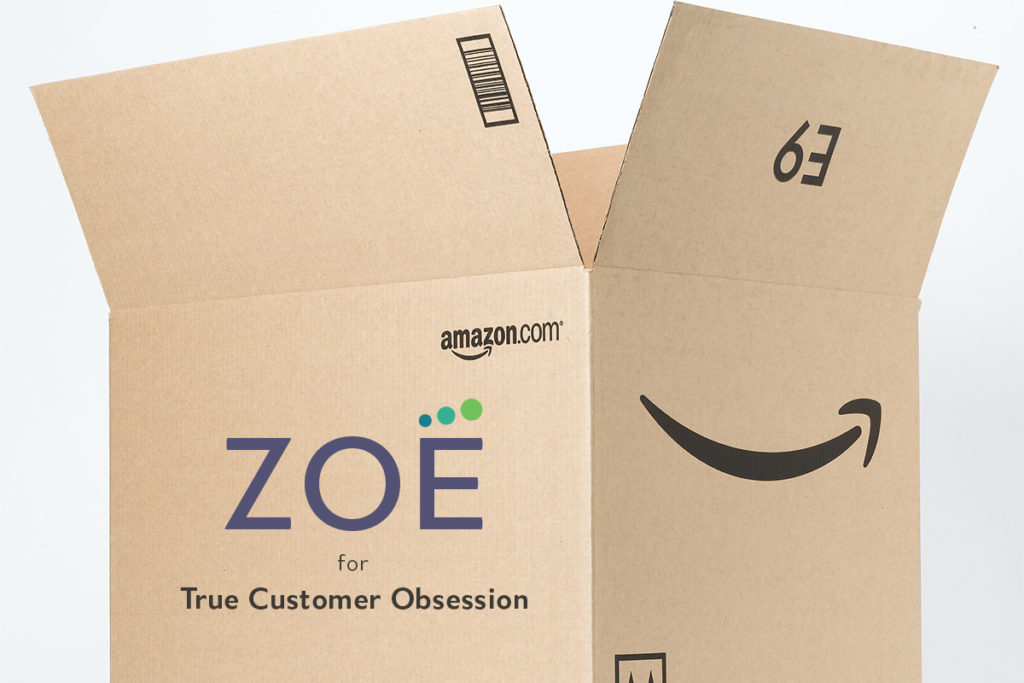True customer obsession is a key principle that keeps companies relevant, competitive, and growing. Without it, companies stagnate, become irrelevant, decline, and die.
Amazon’s Customer Obsession
I was inspired by Jeff Bezos, Amazon CEO, when reading his 2016 Letter to Amazon Shareholders. In this year’s letter, he outlines four key principles that he believes are critical to keeping his company, or any company for that matter, relevant, competitive, and on a growth trajectory. You can read the full Amazon Shareholder letter.
I find a striking resemblance between the ideas depicted by Bezos, which could lead Amazon to over a trillion dollars as a potential market cap, and the customer centricity product Zoe that Totango introduced not too long ago. Here are the parallels:
True Customer Obsession
Customer obsession is a company wide decision that is necessary for a company culture that influences and projects onto everything the company does.
Here’s the relevant quoted section of the letter:
True Customer ObsessionThere are many ways to center a business. You can be competitor focused, you can be product focused, you can be technology focused, you can be business model focused, and there are more. But in my view, obsessive customer focus is by far the most protective of Day 1 vitality. Why? There are many advantages to a customer-centric approach, but here’s the big one: customers are always beautifully, wonderfully dissatisfied, even when they report being happy and business is great. Even when they don’t yet know it, customers want something better, and your desire to delight customers will drive you to invention on their behalf. No customer ever asked Amazon to create the Prime membership program, but it sure turns out they wanted it, and I could give you many such examples. Staying in Day 1 requires you to experiment patiently, accept failures, plant seeds, protect saplings, and double down when you see customer delight. A customer-obsessed culture best creates the conditions where all of that can happen.
The idea of true customer obsession that involves everyone within the company and is embedded into the culture and the everyday activities of the organization is exactly the idea that led to the creation of Zoe. I was struggling with the challenge of how to make a bigger impact on customer success, an impact that ripples across the entire organization. I asked myself, “What is customer success 2.0?” The answer that came to me, which clearly resonates with Bezos: company wide customer obsession.
In my own words: True customer obsession is a way to center and align your business around your customers.
Resist Proxies
In his letter, Bezos cautions against external proxies in the form of strict processes or addiction to market research. Instead he advises companies to assess each situation and make the right decisions for that particular situation, while also developing deep intuition and a direct connection to the situation. A very timely and highly-publicized negative example of this pitfall is illustrated in the recent United debacle. But we don’t need to go to the extreme to know that there are many cases in which companies are applying the right rules for the wrong situations.
One of the key concepts of Zoe is the enablement of volunteer participation of employees in actions to impact customers. Instead of hierarchies and tasks and processes, Zoe encourages everyone in a company to use their expertise and swarm organically to solve customer issues with Impact Steps. Impact Steps give visibility into the commitments and progress of each customer champion to the entire company, enabling everyone to rally around the customer cause. Zoe and Impact Steps are designed so each situation can be assessed and acted upon individually, superseding process and avoiding stagnation.
Embrace External Trends
Bezos also talks about the importance of identifying (easy), then embracing and adopting (hard) meaningful external trends. The two biggest tech trends right now are 1) AI for data and 2) conversational user interfaces (like Alexa) that allow humans to interact with data in a conversational way.
Zoe was designed with Alexa in mind: let’s make a simple conversational interface where you can ask and receive human responses. DNA-CX the AI of customer data behind Zoe, is an incredibly powerful, flexible architecture that customizes itself for each business to provide real-time customer context. DNA-CX is the only customer-centric data model, and it’s made possible by the leaps in AI advancement in recent years.
High Velocity Decision Making
The final and primary principle Bezos divulges is the concept of “Disagree and Commit.” Resist the temptation to wait for perfect decisions. Instead optimize for fast iterations over perfect attempts.
An important element of decision-making is the availability of information. In many organizations, customer data is locked in systems, silos, and storage places that are not immediately available. This can slow down decision-making, which is far from optimal.
Zoe is designed to continuously collect all streams of customer information in real-time and democratize it, making the data accessible via any channel that’s used by those needing to make decisions. This is the reason Zoe ‘lives’ within communication channels like Slack and email so there is no need to login to yet another IT system, which prevents all potential barriers to customer data. This level of transparency is designed to allow anyone within the company to make the right customer decisions, over time, all the time.
Customer Obsessed Companies
At a recent VC dinner I attended, all participants were asked, “On which company would you bet all your money?” Most of the entrepreneurs, CEOs, and venture partners in the room named Amazon. I found Bezos’s message inspiring and its alignment with Zoe undeniable. If you’re also inspired by Amazon and its future, customer-centric Zoe can be the catalyst for a similar change in your company.


Eric Benhamou says:
Customer centricity is now a necessary theme of corporate values. Easy to state, very hard to live day to day. Zoe makes it easier, provided the cultural bias is genuine and the CEO sets the tone.